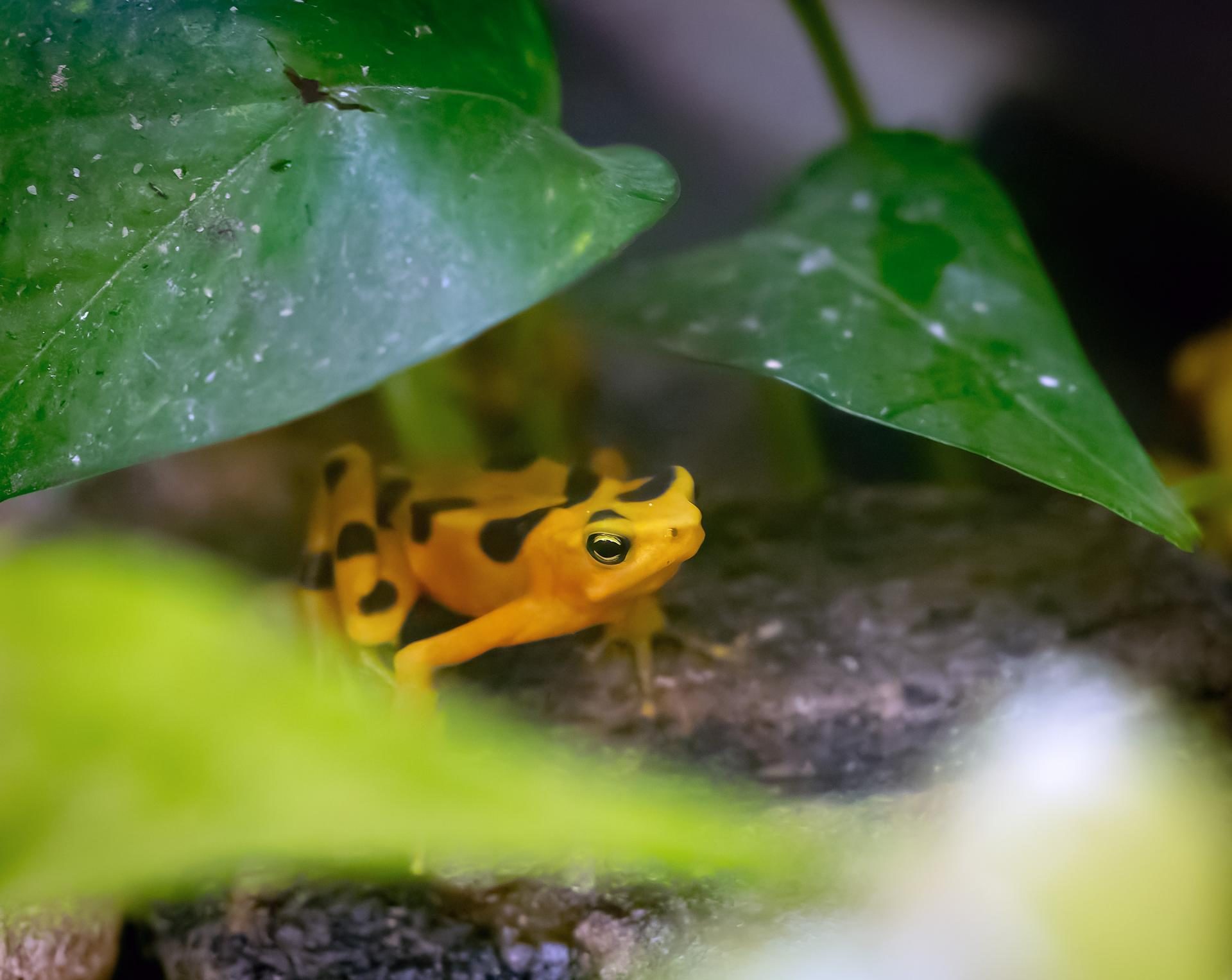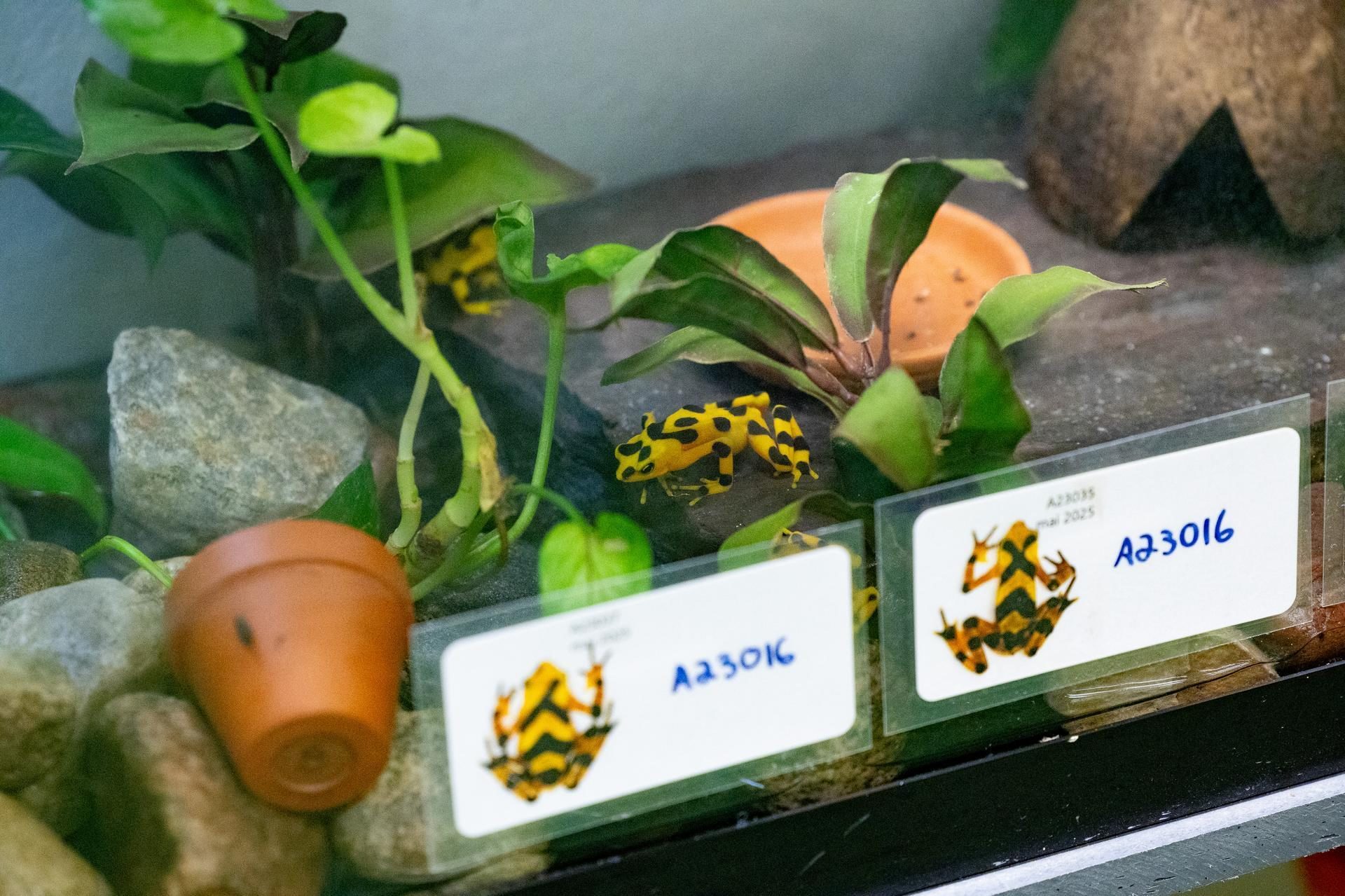
Panamanian Golden Frog
Panamanian Golden Frog
Distribution
Panama
Diet
Insectivore
Habitat
Forests and Wetlands
Latin Name
Atelopus zeteki
IUCN conservation status
Probably extinct in the wild, the future of this tiny frog depends on conservation efforts in zoological facilities.
Interesting informations





